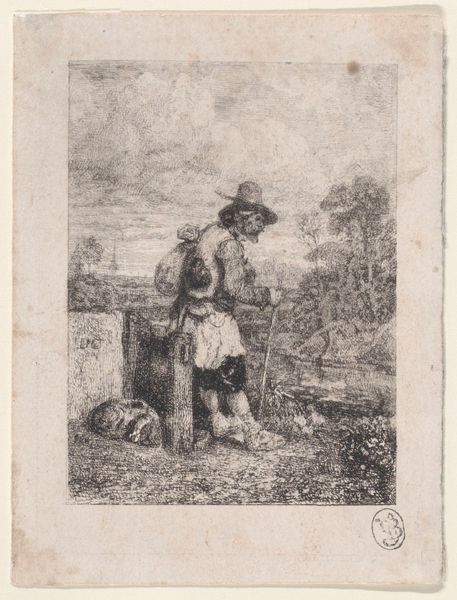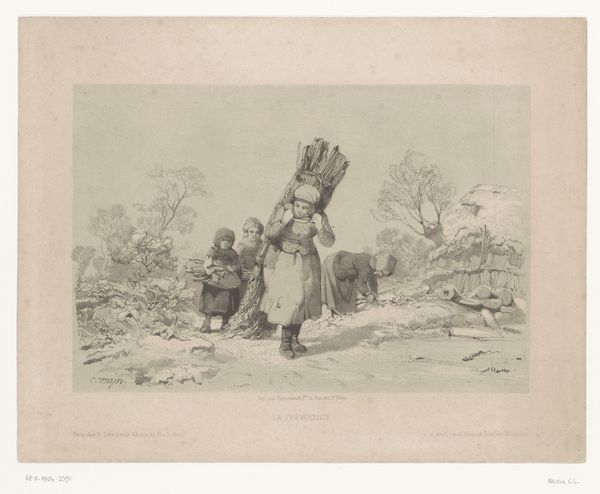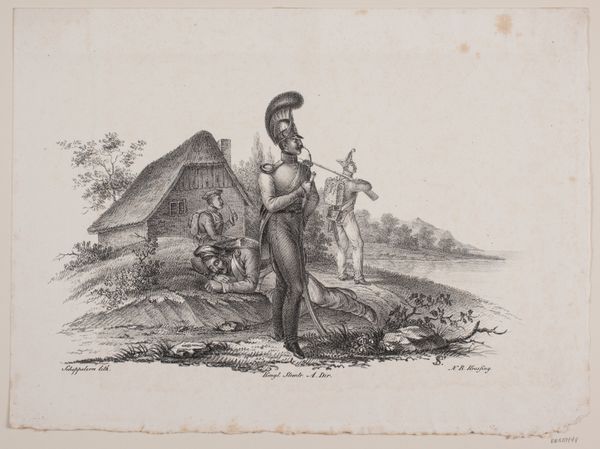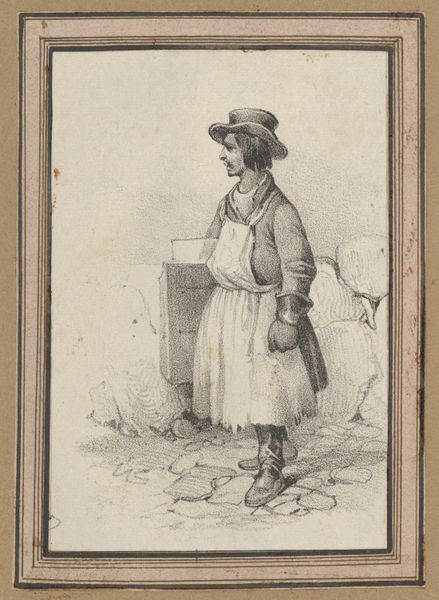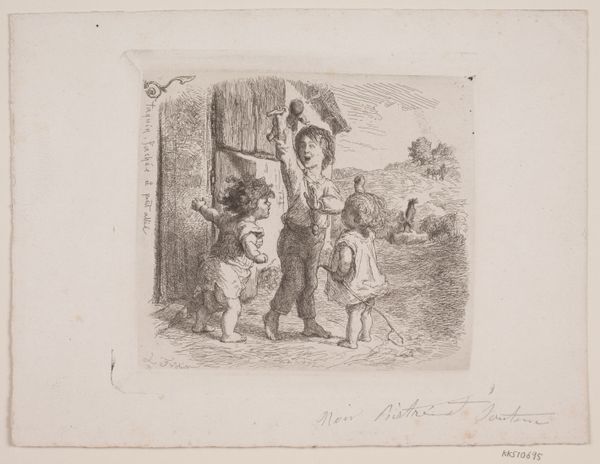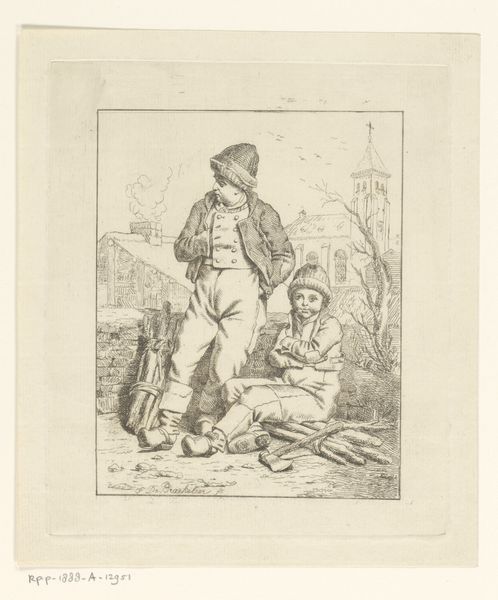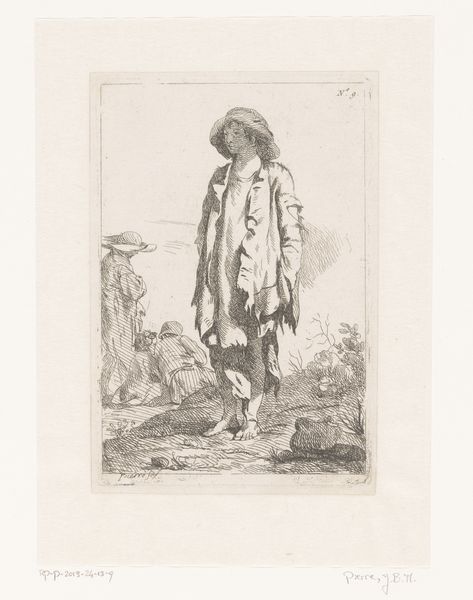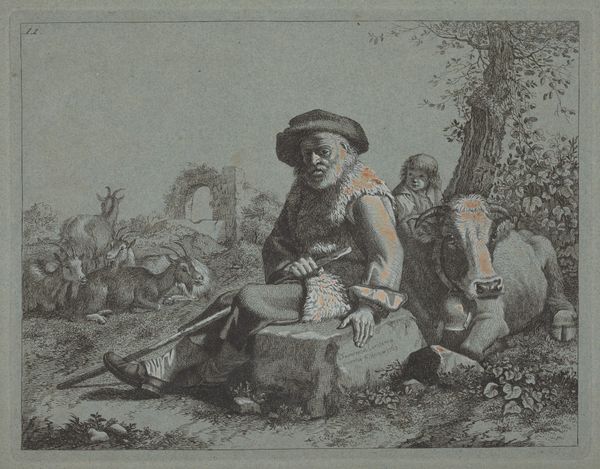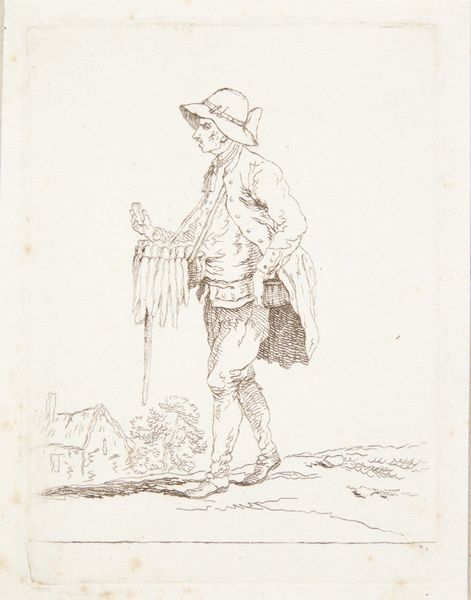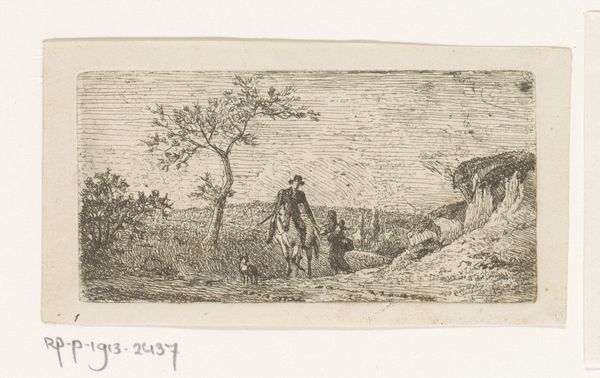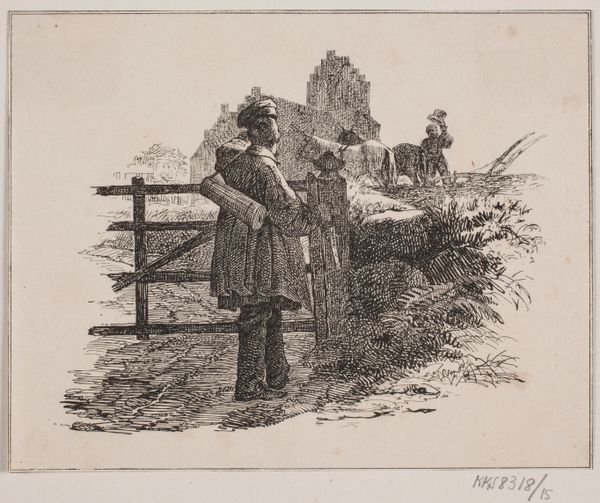
print, engraving
#
portrait
# print
#
landscape
#
genre-painting
#
engraving
#
realism
Dimensions: height 83 mm, width 84 mm
Copyright: Rijks Museum: Open Domain
Editor: This is "Visverkoper op de markt," or "Fish Seller at the Market," an engraving from the 1820s by Ferdinand de Braekeleer. It has a somewhat whimsical and sketchy feel to it, depicting a busy marketplace. What strikes you most about this piece? Curator: Well, placing this engraving within its historical context is fascinating. Consider the 1820s - the rise of industrialization, growing urban centers. Images like this offer glimpses into everyday life for the common person. It almost romanticizes labor, doesn't it? A bustling scene where commerce thrives. Editor: I see what you mean about romanticizing labor. I was initially just drawn to its illustrative quality. Curator: It's interesting to think about who this artwork was intended for. Prints made images more accessible, breaking down the barriers of art viewership, and providing a sort of democratization of imagery. Editor: So you are saying the print format had an effect on how it was received at the time? Curator: Absolutely. Printmaking democratized image consumption. This meant that a broader audience, not just the elite, could own or view artworks. How does knowing it was for wider audiences change how you view the art now? Editor: It makes me think more about the choices the artist made in what he depicts in this artwork, not the nobility, not idealized scenes, but real people at the market. I wonder, did images like this one effect real political change? Curator: Possibly! They documented a historical shift, showcasing scenes of everyday existence that were previously excluded from the canon of ‘high’ art. Editor: I hadn’t thought of it that way. Thanks for opening my eyes to the significance of the work as an image within a certain time. Curator: Likewise. I was interested to learn what visual details catch your attention!
Comments
No comments
Be the first to comment and join the conversation on the ultimate creative platform.
